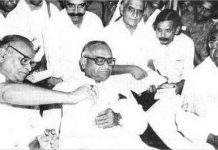This article is written by Lavish Sharma, from the Institute of Law Nirma University. This article discusses the digitalization of Indian courts amid pandemic.
Table of Contents
Introduction
In the wake of the shutdown triggered by the coronavirus pandemic, courts in India are working through video-conferencing to resolve emergency issues. While measures have been taken to maintain the status quo, such as suspension terms and temporary order suspensions, a freeze on debt payments, a number of legal issues remain to be determined. The unforeseeable shutdown has undermined the judiciary system and left it incapable of fulfilling its basic mandate — that of having access to justice at all times. The catch-up game being played right now has exposed the fault lines in the network. The most reactive strategy will meet short-term needs. This also paints an image of a simplistic modern trial, which utilizes simple online mail systems and networking tools not expressly built for court proceedings. Until a concerted attempt is taken to develop structures for the current and for the future by maximizing the usage of technologies, the judiciary risks being an inactive cornerstone of democracy in times of crisis.
Set-up for digitalization
During the early phases of digitization, the E-courts Mission Mode Program was initiated as part of the National eGovernance Plan (NeGP). The first period of deployment began in 2010-2015, while the research itself began in 2007.
The goal was to render the justice system universal, open, cost-effective, consistent, efficient and clear. By 2015, the existence of district and Taluka courts was established on the National Judicial Data Grid (‘NJDG’) and 14,249 courts were computerized with the deployment of the Case Information Program (‘CIS’) which provides the day-to-day status of the case, the orders of the trial, the date of the hearing and the progress of the case on any particular day, etc., on-line from any part of the world. The NJDG program holds details on pending proceedings, discarded proceedings and complete cases under various headings. This is already operating to its maximum potential and has a range of Market Intelligence Tools to further improve the functionality of this program.
In phase II of the programme, from 2015 to 2019, technologies for jail communications have been installed; and mobile video conferencing for capturing testimony in critical situations such as sexual assaults, where technology has already been used. Websites such as ‘epay’, ‘e-filing’ and ‘e-court facilities’ and apps such as National Service and Tracking of Electronic Process (NSTEP), ‘Justis’ have been introduced during this process, which is currently ongoing. The e-filing mechanism has been a big improvement for paperless courts as it has ensured that applications are submitted electronically and only limited hard copy printing takes place. Given the introduction of the e-pay platform, its applicability remains restricted to a few districts/divisions inside 11 States/ UTs.
Throughout the Objectives Accomplishment Study, issued by SC throughout 2019, both the positive and the pending measures under the Program have been highlighted. Other project managers have been taken over by the 14th Finance Commission and that is a direct problem because, in search of full digitalization, processes such as scanning and digitization of case documents and court record room management, inter alia, have been discussed.
Ironically, a digital signature token for the verification of records has already been issued to judicial officers and court personnel. On the other side, the challenge of cloud computing the repositories and software used by the courts is still at an early stage with the start of pilot projects in one district of each province, and the same has been quite productive in Goa.
Ambition
Though considering a digital trial, simply eliminating the operation of brick and mortar is not the goal. The software can have a wide range of applications in court proceedings and even promote an end-to-end, comprehensive process. Electronic summons service, notifications can expedite prosecutions exponentially. Virtual Court Reporting technologies will include a full copy of any trial and produce informative data at the same time. Parties can access details on the time taken for each stage and, as a consequence, determine the exact causes of delays.
This also helps consecutive judges to respond to a case without needing to waste a lot of time knowing its context. Blockchain technologies may be leveraged to boost the transparency of proof and transaction confidentiality, thereby mitigating conflicts in the first instance.
Audio-video software will discuss the problem of locational disorders to supporters and promote cross-border action. It is a vision for many people to get access to the Supreme Court through a professional counsel without needing to fly all the way to the capital and have to pay insane prices. However, physical trials have a strong time factor limitation in that a successful trial involves time coordination between all side counsel and the judge and, in certain instances, the plaintiffs. Virtual hearings will significantly promote time-convergence and enhance case disposition. E-bundling tools will combat paper-based activities, effectively reducing the possibility of misuse and deterioration of records. These are only a few indicators of the limitless promise of modern technologies.
To know more about Digital signature please visit
Artificial Intelligence
Predictive Analytics and AI are constantly being used, and one of these modes is CCTNS, i.e. Crime and Criminal Network Monitoring Program. This method operates by forecasting potential criminals and crime hotspots for public safety assistance. This has been introduced in India at a quick speed following its acceptance in 2009. Predictive Analytics can often help to aggregate cases and study and to assess the chances of winning cases.
The Ministry of Electronics & Information Technology, in its 2019 Study, argued that AI could help to boost the efficiency of knowledge extraction and data processing. This will also help to establish a knowledge archive for convenient public access, thus increasing public trust. SC has released ‘SUVAS,’ an AI device, in 2019 for the translation of rulings or directives from English into nine vernacular languages.
Revolution
It does not mean that there are no obstacles involved. Socio-economically poorer groups do not consider automated networks simple to handle. The professional preparation program and the selection procedure for judges would need to be taken into consideration of these changes. The ability set needed by clerks, registry officials and others would also shift. The virtual defence has to be improved in all operations. High initial expenditure can be a barrier. Stage-by-step development focused on scientific studies defining the needs of the community and individuals may reduce unnecessary spending instead of having a chair diagnosis. The design of such new systems must necessarily require a public-private collaboration model. This makes ethics the main consideration to advocate for stringent rules in order to prevent a repetition of the problems that have emerged during the introduction of Aadhaar.
International experience suggests that well-implemented systems not only benefit the public in the short term but also improve cost-effectiveness in the long term. It should be a cycle of sharing and taking, whereby collaboration will be compensated with rewards, thereby increasing the transition. Although it is vital that, aside from residents, certain interests are often recognized, it is also important to restrict the attention to genuine and fair issues by prioritizing public interest above private benefit. The obstacles, while large, need to be resolved not just because the changes are significant, but also because they primarily facilitate the realization of the principle that is the foundation of the legal system-access to justice.
Inspirations
Internationally, there are already a variety of usable structures that make it possible for us to bravely reach this modern age with less fear of the unknown. In Canada, the state of British Columbia launched electronic civil courts in 2016, allowing people to settle small-value conflicts that have stayed inaccessible as a consequence of the pandemic.
Turkey’s award-winning Integrated Online Distribution program has greatly minimized gaps in the operation phase. The West and Central London Family Courts and the proof archives of the Higher Criminal Courts of England and Wales, among others, have been fully digitized. While several jurisdictions have embraced artificial intelligence in consulting capacities, China and Japan have only assigned a few impartial judicial decision-making functions. In India, the E-Committee of the Supreme Court released a National Strategy and Action Plan for the Application of Information and Communication Technology in the Indian Judiciary as early as 2005. While the proposals envisaged were laudable, there was a lack of a detailed development process. The aggressive three-year five-year program saw the launch of the second phase in 2015, almost eight years late, with little prospect of approaching completion. This speed is primarily attributed to the unrealistic expectation that even overburdened judges will assume care of the whole procedure.
In fact, there have still been no changes to the strategy in the face of technological advances over the last 15 years. Owing to lack of monitoring and reporting of development, it is unclear if this is merely a pause in implementation or whether the program has been scrapped. Despite all this, the few steps taken to replace the policy described above have proved to be incredibly resourceful. Apps such as E-Courts, E-pay and NSTEP have demonstrated tremendous capacity to boost the pace of the legal procedure and the transparency of the litigants. Such minimal successes highlight the need for greater transparency and execution experience to improve the chances of achieving substantial social objectives. The global situation, by opening the way for change, offers an incentive to scale up this effort and push on with greater momentum and urgency.
Advantages of video-conferencing
The VC system would offer a replay medium for clarification of the claims provided by respondents and the accused. When registered, they will also act as the archives of the whole case proceedings. This would also lead to the successful live sharing of this video-conferencing and making the mechanism more participatory, which was also demonstrated in the case of Swapnil Tripathy v. Supreme Court of India. Justice G.S. Patel of the Bombay High Court has also recently begun video broadcasting on a courtroom basis.
These measures also raise the government’s expenses of calling witnesses from various places, as set out in Section 3 of the Delhi (Payment of Expenditures) Regulations, 2015. The only cost will be to set up a Supervisor at a remote spot. This also decreases the possibility of prisoners fleeing coupled with increased protection threats, i.e. the consequent “curtailing of [increased] expenditures”.
D.Y. Chandrachud, J. observed in his dissenting opinion in Santhini v. Vijaya Venkatesh that complications and uncertainties in the administration of justice at the point of lack of availability or travel time can be effectively overcome by VC, thereby raising the number of cases heard. Throughout the U.S., the Federal Judicial Center, a polling arm within the U.S. federal judiciary, performed a poll in which the majority was in support within VC on the basis of its time-saving existence, versatility and enhanced public access. In fact, the e-filing protocol allows it possible to reduce documentation and automate the process and even provides a framework comparable to single-window clearances.
Conclusion
While this is a positive improvement, the e-filing program alone is not nearly enough. The related improvement in the manner of claims must also be made. Every other reform in the filing and claim method must be closely examined in order to ensure that the integrity and sanctity of the procedure are maintained. While it can not be denied that changing the legal profession to a technology-dependent career would present a significant number of obstacles, the same can be implemented in an effective manner by making a few quick changes to the existing procedure. If properly planned, the technological shift will remove this conundrum and save precious time, allowing attorneys to testify in different courts within minutes of each other. Proper organizational control in the treatment of cases would be one of the main obstacles awaiting the introduction of such a strategy.
However, transitioning to electronic courts would entail flexibility in time control, because all plaintiffs and supporters will be required to enter simulated courts at a specified date. Under such a situation, it is crucial that the cases reported for the day be complied with in a time-bound fashion in order to ensure less internet traffic (in order to avoid overloading of the system) and, most significantly, to ensure quick and efficient punishment.
References
LawSikho has created a telegram group for exchanging legal knowledge, referrals and various opportunities. You can click on this link and join:
 Serato DJ Crack 2025Serato DJ PRO Crack
Serato DJ Crack 2025Serato DJ PRO Crack











 Allow notifications
Allow notifications



